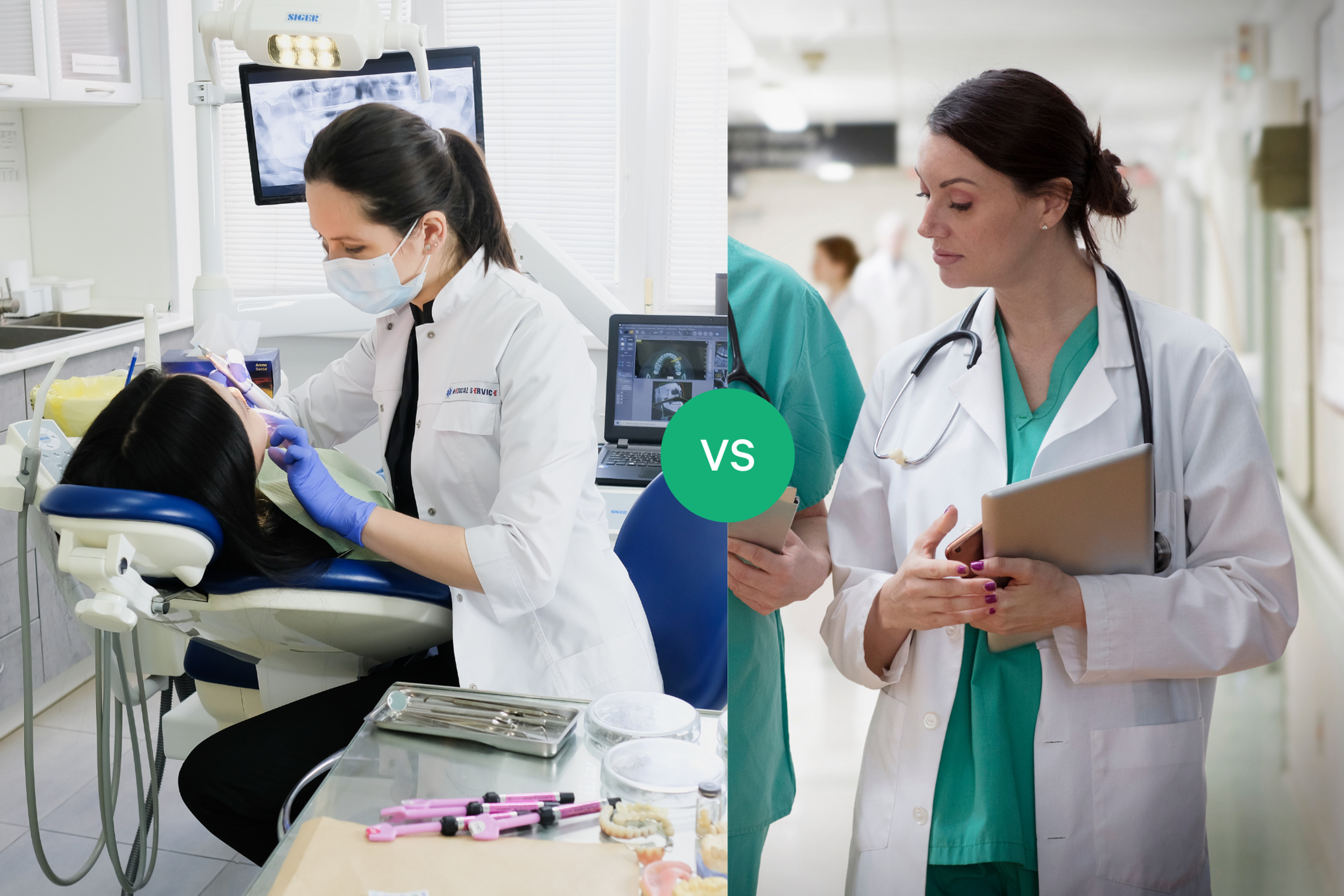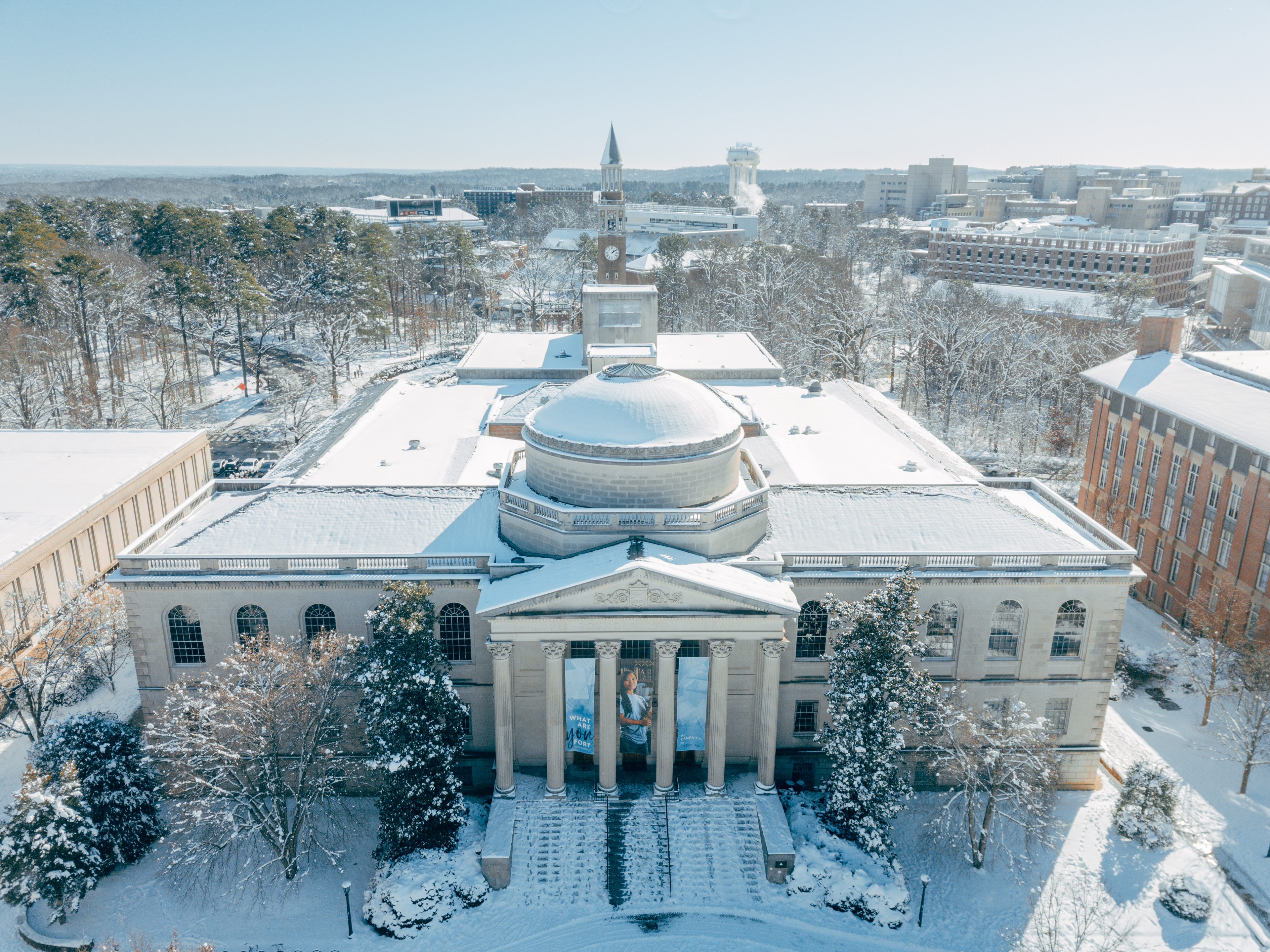Dental School vs. Medical School: Pros, Cons, and How to Decide
Are you torn between pursuing dental school or medical school? This article explores the pros and cons of each path, and offers tips on how to make the best decision for your career goals.
Posted January 24, 2024

Table of Contents
Deciding on a healthcare career is a big decision that requires careful consideration of many factors. Dental and medical schools are two popular options for individuals considering a healthcare career. While both fields have their similarities, they also differ in many ways. This article explores the pros and cons of choosing dental school versus medical school and provides information to help individuals decide which path may be right for them.
Dental School vs. Medical School: Program Timelines, Curriculums, and Opportunities for Specialization
Medical and dental schools share some similarities, such as the rigorous training required to earn a degree and the importance of being able to work in a high-pressure environment. However, there are also significant differences between the two fields. While medical students typically train to become physicians in various specialties, dentistry students train in just one area of medicine - dentistry - and work specifically with the teeth, gums, and other structures within the mouth.
Another key difference between dental school and medical school is the length of the programs and subsequent residencies. Most dental schools have four-year DMD (Doctor of Medicine in Dentistry) or DDS (Doctor of Dental Surgery) programs, with the first two years focusing on biological sciences and dental-oriented sciences such as oral anatomy, oral pathology, and oral histology, followed by two years of clinical study. Dental school graduates must then take a state licensure exam comprising of a written examination and a clinical examination to begin practicing as a general dentist. Graduates can also choose to receive further education and training in a dental specialty; attain board certification through written, clinical, and oral exams; or complete a one-year residency rotating between specialties.
Medical students also typically receive two years of pre-clinical science education and two years of clinical education in either a D.O. (Doctor of Osteopathic Medicine) or M.D. (Doctor of Medicine) program. The first step of the medical licensure process, the United States Medical Licensing Examination (USMLE) Step 1, is completed in the second year. However, unlike dental students, third-year medical students complete clinical rotations in the major medical specialties, usually internal medicine, obstetrics and gynecology, family medicine, neurology, pediatrics, psychiatry, and general surgery. Fourth-year medical students have more freedom in their clinical rotations and often choose electives related to the specialties they want to pursue, such as anesthesiology, dermatology, or radiology. Medical students generally begin their residency application processes in their third year or the beginning of their fourth year and apply for a residency match program with the Association of American Medical Colleges' Electronic Residency Application Service. After interviewing with these programs and submitting a ranking of their preferred programs, medical students will find where they matched in the March of their final year, then graduate medical school and begin their residencies, which typically last between 3 to 7 years depending on the specialty. Residents complete the final step of licensure, the USMLE Step 3 exam, in the first or second year of residency. Upon the completion of their program, residents can obtain their license and begin practicing or pursue a subspecialty with additional training.
Dental and Medical School: Education Pathways
The education pathways for dental and medical schools are not identical. Most dental and medical schools require a bachelor's degree, but some accept students who have completed the first two years of undergraduate study in the natural sciences. Medical schools typically require a bachelor's degree and completion of the Medical College Admission Test (MCAT), while dental schools require the Dental Admission Test (DAT). Dental schools are generally less competitive, with an average acceptance rate of 53.5% compared to medical schools' average acceptance rate of 5.5%. However, there are also about half as many dental schools as medical schools in the United States, which affects the admissions data.
It is important to note that the curriculum for dental and medical schools also differ. While both programs require extensive study in the sciences, dental school places a greater emphasis on oral health and dental procedures, as well as dental cosmetics, while medical school focuses on the diagnosis and treatment of diseases and conditions affecting the entire body. Additionally, dental education is usually shorter, especially when considering the long residency programs of certain medical specialties.
Time and Cost Factors
The cost of earning a degree from a dental or medical school can be significant. According to the American Dental Association and the Education Data Initiative, the average dental school graduate owes about $286,000 in student loan debt, with the cost of a four-year program averaging about $220,000. The average medical school graduate will spend about $219,000 on a four-year program and owe about $251,000 in debt.
However, it's important to note that the time it takes to complete a dental education is typically shorter than medical school. Dental school programs typically last four years, and graduates can begin practicing upon passing their licensing exams, while medical students must also complete residencies. According to the American Association of Medical Colleges, the average resident makes around $63,000 a year working anywhere from 40 to 80 hours a week.
Financial Aid and Scholarships Opportunities for Dental Students vs. Medical Students
Financial aid and scholarships can be a significant factor in deciding between dental and medical schools. Both fields offer opportunities for financial assistance, but it's essential to research these opportunities and understand the eligibility requirements thoroughly. Some scholarships may be specific to certain fields or specialties, so it's important to carefully consider how these opportunities may impact future career options. For prospective medical students worried about the cost of attendance, there are several medical schools offering robust financial aid packages or even free tuition, such as Weill Cornell Medicine, NYU Grossman School of Medicine, and Kaiser Permanente School of Medicine. There are also several dental schools that offer generous scholarships, such as UC San Francisco School of Dentistry and Penn Dental Medicine.

Job Outlooks for Dentists and Physicians
According to the Bureau of Labor Statistics, employment of dentists is projected to grow by 4% from 2022 to 2032, slightly above the average of 3% for all occupations, due to the increased demand for dental services for an aging population. Employment of physicians and surgeons is projected to grow by 3%, but certain specialists, such as psychiatrists and pathologists, are expected to experience higher rates of growth due to growing demand and access for psychiatric care and higher rates of chronic illnesses.
Work-Life Balance
One factor individuals considering a healthcare career should consider is work-life balance. The demands of the job may differ between dental and medical professionals. Dentists often have more control over their schedules and may have a better work-life balance, while physicians may work longer and more irregular hours, particularly during residencies. However, this is also highly dependent on which area a dentist or physician practices in.
How to Decide Between Dental and Medical School
Ultimately, the decision between dental and medical school should be based on individual preferences, interests, and career goals. Consideration should be given to factors such as work-life balance, financial cost, job outlook, and opportunities for specialization. It may be helpful to speak to professionals in both fields and visit schools to get a better understanding of the education and career paths involved.
Pros of a Career in Dentistry
One potential benefit of choosing a career in dentistry over medicine is that dentists often have a better work-life balance due to greater control over their schedules. Additionally, dental school may be less competitive than medical school in terms of acceptance rates and may have lower overall costs, as graduates can quickly begin practicing dentistry. Dentists also specialize in a specific area of healthcare, which may be appealing to individuals who prefer a more niche focus.
Pros of a Career in Medicine
One potential benefit of choosing a career in medicine over dentistry is the greater variety of specialties and opportunities for specialization. Physicians may also have more flexibility in their career paths and can explore a wide range of healthcare career options. Additionally, medical school may provide students with opportunities for more varied clinical experiences, preparing them for a range of potential career paths.
Key Takeaways
- Choosing between dental and medical school can be a challenging decision, as both tracks offer many opportunities for professional growth, specialization, and making a difference in the lives of patients.
- Both dental and medical school require years of rigorous study of the body's structure and functions, followed by hands-on experience through clinical training.
- When deciding whether to apply to dental school or medical school, individuals should consider their own areas of interest, financial considerations, and preferred work-life balance.











